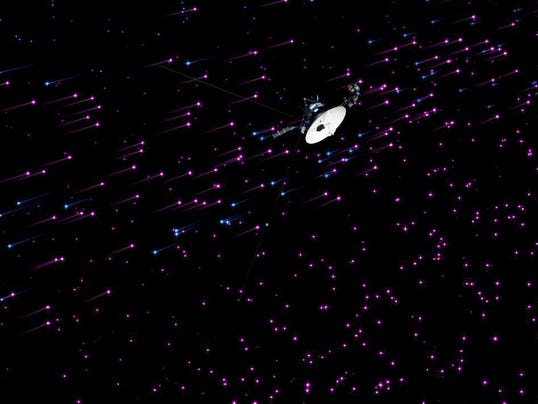 We've made it to the stars, at last.
We've made it to the stars, at last.
For the first time, a human-made object has left the sun's realm behind and ventured into the vast space between the stars, scientists announced Thursday. The record-setting spacecraft is NASA's scrappy Voyager 1, which launched in 1977 and edged into interstellar space on Aug. 25, 2012, according to recent data.
"We are in a new region of space where nothing has been before," says Voyager project scientist Ed Stone of Caltech.
Voyager's feat is a first, but the claim that it has finally tiptoed past the border to interstellar space is not. For a decade, researchers have trumpeted the spacecraft's arrival at one new cosmic boundary after another. In March, scientists presented data arguing that the ship had reached interstellar space in August 2012.
NASA promptly poured cold water on the claim. Stone declared it was "critical" to detect certain changes in the magnetic field before concluding that Voyager had departed the heliosphere. That's the enormous blob of solar particles that envelops the planets and shields them from galactic radiation; outside the heliosphere lies the dark, chilly space between stars.
There have been no published reports of the magnetic-field changes that Stone sought as confirmation. Even so, he says he and most of his colleagues think the spacecraft has made it.


 Three more Chinese astronauts, or taikonauts, are now marooned in space following the successful return of...
Three more Chinese astronauts, or taikonauts, are now marooned in space following the successful return of...

 Susumu Kitagawa, Richard Robson and Omar M. Yaghi are awarded the Nobel Prize in Chemistry 2025...
Susumu Kitagawa, Richard Robson and Omar M. Yaghi are awarded the Nobel Prize in Chemistry 2025...






























